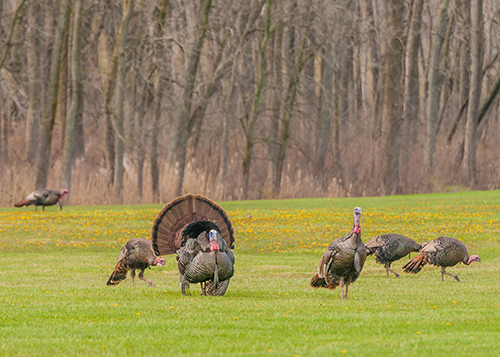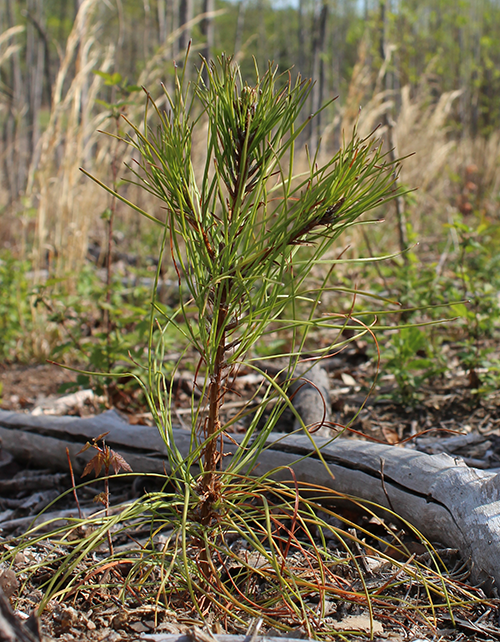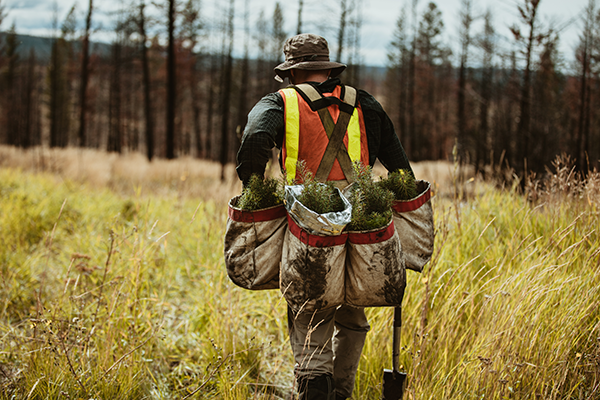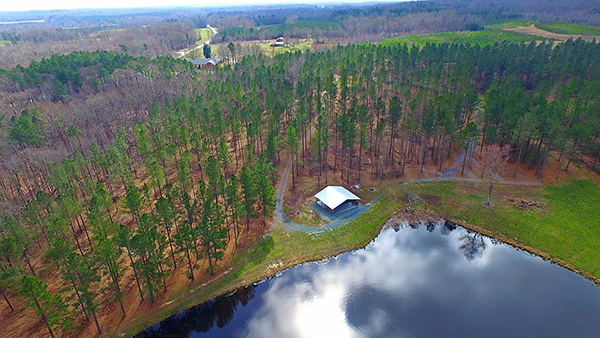Frequently Asked Questions
We are happy to answer any questions you may have, and we welcome your questions if we have not answered them below.
Please reach out to us if you have any questions or concerns.


We are happy to answer any questions you may have, and we welcome your questions if we have not answered them below.
Please reach out to us if you have any questions or concerns.
At Piedmont Timber, we control ALL aspects of the timber harvesting process.
We start with listening to the landowner's goals and objectives.
Next, we assess the forest and the land to understand what the property offers.
We then perform a timber cruise based on the information gathered.
This will allow us to present a timber harvest proposal that will incude a price for the trees and a forest managment plan for the property.
After we have purchased the timber we then prepare the property for a timber harvest. This includes marking the timber harvest lines, stream buffers, and sensitive areas. All of our timber purchases are prepared prior to the arrival of any logging equipment.
We then harvest the timber based on the timber agreement.
Finally, if so desired by the landowner, we will assist with the reforestation process to ensure a forest for the future.

Payment for the timber will be paid in full upon signing of the Timber Deed.
The payment can be in the form of a company check or a certified bank check.
Piedmont Timber carries a $2 million General Liability insurance policy.
Along with Workers Compnesation Insurance.
We also are able to add on additional insurance if needed.
Piedmont Timber prefers a 36 month time agreement to harvest and remove all forest products.
The timber harvest time agreement is negotiable for each tract.
Piedmont Timber is responsible for identifying and marking all property/ timber harvest lines pertaining to our operations.
Piedmont Timber is responsible for obtaining any and all permits pertaining to our operations.
A key component in managing a forest is to increase the wildlife habitat. We strive to create wildlife habitats that increase the carrying capacity of each tract of land through timber harvesting and management.
All wildlife species throughout the Southeast United States thrive when there is change and edge in the landscape.
Whether it's planted pines for songbird nesting or protection from weather, to hardwood cut-overs that create browse and security for white-tail deer. At Piedmont, we offer different levels of wildlife management from establishing food plots to assistance in creating vegetative corridors.
Environmental Concerns: A major concern of ours when harvesting timber is erosion control. Erosion control protects the land and our water quality. Applying grass seed and straw to exposed soils, using logging debris to cover logging trails, creating stream crossing buffers, and developing logging road turn outs and sediment ponds are just a few ways to prevent erosion.
If we can keep the top soil on top then we can create a forest for the future. The top six inches of soil is the seed bed for the forest. Our goal is to keep the moisture content high and the soil tempertures low. If we can protect the soil then we can create tomorrow's forest.
Piedmont Timber is responsible for adhering to any local, state, and federal laws pertaining to our operations—including following the Best Management Practices (BMPs) and Forest Practice Guidelines (FPGs).

Piedmont Timber will remove all man-made litter brought onto the property by our employees during our operations.
There will NOT be any drink cans, tires, oil cans, paper products, etc., remaining on the property once our operations are complete.
Present-Use-Value for Forestry: This program was established to help remove the pressure of increased property taxes on an individual property owner.
What this program offers: Reduction of property taxes by up to 80%.
Piedmont Timber provides all necessary paperwork to apply for the program. Piedmont Timber ensures completion of all necessary forms for our clients to be successfully enrolled in the Present-Use-Value for Forestry program.
Establishing a forest for the future can come in many forms. Traditionally, most create a forest by planting loblolly pines and allowing them to grow for future financial gain. This is a very tried and true way of creating a new forest in a short time frame. However, the question, "Why not plant hardwoods?" is very common.
Planting hardwoods has been tested by a multitude universities throughout the southeast and, as of now, has not been successful. The cost of planting the hardwoods is almost 5 times as much as planting pines, but the major deterrent is the wildlife. The white-tail deer, along with rabbits and other rodents, browse on the young hardwoods and prevent them from establishing a hardwood forest.
The most successful way to create a hardwood forest is to harvest the mature timber and allow the hardwoods to regenerate themselves. At Piedmont, we have had success with thinning the hardwood forest and planting pines after the harvest. This creates a mixed stand without having to clear-cut.

At Piedmont Timber, we control ALL aspects of the timber harvesting process.
We start with listening to the landowner's goals and objectives.
Next, we assess the forest and the land to understand what the property offers.
We then perform a timber cruise based on the information gathered.
This will allow us to present a timber harvest proposal that will incude a price for the trees and a forest managment plan for the property.
After we have purchased the timber we then prepare the property for a timber harvest. This includes marking the timber harvest lines, stream buffers, and sensitive areas. All of our timber purchases are prepared prior to the arrival of any logging equipment.
We then harvest the timber based on the timber agreement.
Finally, if so desired by the landowner, we will assist with the reforestation process to ensure a forest for the future.

Payment for the timber will be paid in full upon signing of the Timber Deed.
The payment can be in the form of a company check or a certified bank check.
Piedmont Timber carries a $2 million General Liability insurance policy.
Along with Workers Compnesation Insurance.
We also are able to add on additional insurance if needed.
Piedmont Timber prefers a 36 month time agreement to harvest and remove all forest products.
The timber harvest time agreement is negotiable for each tract.
Piedmont Timber is responsible for identifying and marking all property/ timber harvest lines pertaining to our operations.
Piedmont Timber is responsible for obtaining any and all permits pertaining to our operations.
A key component in managing a forest is to increase the wildlife habitat. We strive to create wildlife habitats that increase the carrying capacity of each tract of land through timber harvesting and management.
All wildlife species throughout the Southeast United States thrive when there is change and edge in the landscape.
Whether it's planted pines for songbird nesting or protection from weather, to hardwood cut-overs that create browse and security for white-tail deer. At Piedmont, we offer different levels of wildlife management from establishing food plots to assistance in creating vegetative corridors.
Environmental Concerns: A major concern of ours when harvesting timber is erosion control. Erosion control protects the land and our water quality. Applying grass seed and straw to exposed soils, using logging debris to cover logging trails, creating stream crossing buffers, and developing logging road turn outs and sediment ponds are just a few ways to prevent erosion.
If we can keep the top soil on top then we can create a forest for the future. The top six inches of soil is the seed bed for the forest. Our goal is to keep the moisture content high and the soil tempertures low. If we can protect the soil then we can create tomorrow's forest.
Piedmont Timber is responsible for adhering to any local, state, and federal laws pertaining to our operations—including following the Best Management Practices (BMPs) and Forest Practice Guidelines (FPGs).

Piedmont Timber will remove all man-made litter brought onto the property by our employees during our operations.
There will NOT be any drink cans, tires, oil cans, paper products, etc., remaining on the property once our operations are complete.
Present-Use-Value for Forestry: This program was established to help remove the pressure of increased property taxes on an individual property owner.
What this program offers: Reduction of property taxes by up to 80%.
Piedmont Timber provides all necessary paperwork to apply for the program. Piedmont Timber ensures completion of all necessary forms for our clients to be successfully enrolled in the Present-Use-Value for Forestry program.
Establishing a forest for the future can come in many forms. Traditionally, most create a forest by planting loblolly pines and allowing them to grow for future financial gain. This is a very tried and true way of creating a new forest in a short time frame. However, the question, "Why not plant hardwoods?" is very common.
Planting hardwoods has been tested by a multitude universities throughout the southeast and, as of now, has not been successful. The cost of planting the hardwoods is almost 5 times as much as planting pines, but the major deterrent is the wildlife. The white-tail deer, along with rabbits and other rodents, browse on the young hardwoods and prevent them from establishing a hardwood forest.
The most successful way to create a hardwood forest is to harvest the mature timber and allow the hardwoods to regenerate themselves. At Piedmont, we have had success with thinning the hardwood forest and planting pines after the harvest. This creates a mixed stand without having to clear-cut.

The Planting Process - Post Timber Harvest
It takes 6-12 months growth to allow for natural regeneration to take place. There needs to be enough leaf exposure from the competing vegetation for the herbicide spray to be effective.
During the summer we apply herbicide to eliminate all competing vegetation.
If needed, in late fall to early winter we can perform a controlled burn to remove the majority of the logging debris.
In the winter to early spring, we plant pine seedlings.
Then it is just a waiting game.
The Process - Costs
Total Expense: $220.00 +/- Per Acre
The Life Span of a Planted Pine Stand is 35-40 Years.
First Thinning: age 14-16 – remove 30-35% of the trees (increase the health of the stand)
Financial Return = $250.00 +/- Per Acre
Second Thinning: age 23-25 – remove lesser trees and allow for a full saw-timber stand
Financial Return = $1,250.00 +/- Per Acre
Final Harvest: age 35-40 – Total Clear-Cut and start a new stand
Financial Return = $2,500.00 +/- Per Acre
The Return on this investment can be: $4,000.00 +/- Per Acre



At Piedmont Land & Timber, we manage and control every aspect of your property: planning, pricing, harvesting, permitting, meeting all environmental regulations, insuring against liability, reforestation, even assistance with reducing property taxes.
Brad Fields
The Piedmont Promise